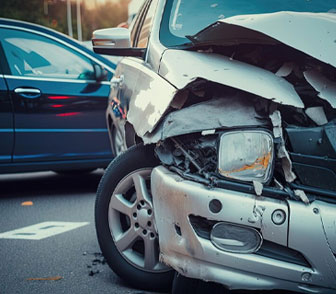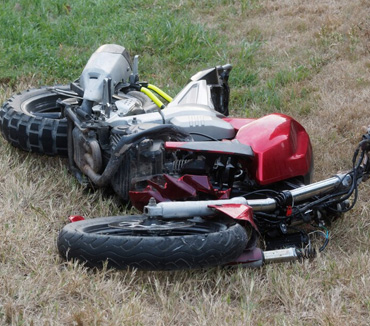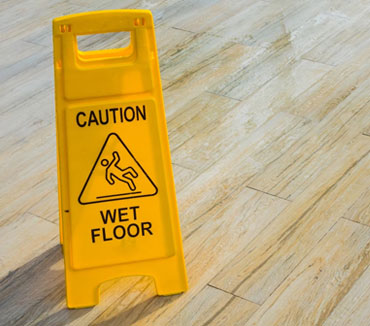Symptoms of a Spinal Cord Injury After a Crash
One of the most common causes of spinal cord injuries in the United States are motor vehicle accidents. A spinal cord injury can be life-altering, as well as cause an individual to be overwhelmed with medical expenses. While every car accident is different, the same general trauma can lead to a spinal cord injury.
Although victims may sustain an injury to almost any part of the body during an auto accident, those relating to the spine are often the most severe. They also happen to be some of the most commonly experienced injuries in serious crashes. Learn more about the types of spinal injuries that may occur in car crashes, discover what compensation may be owed to you, and gain information on the ways that an experienced attorney can increase your chances of making a full and fair recovery.
Symptoms of a Spinal Cord Injury
When your motion is suddenly halted as a result of a car crash, the abrupt deceleration can cause injuries to your back and neck. If the force was strong enough to damage one of your actual vertebrae, you may be experiencing some of the following spinal cord injury symptoms:
- Muscle weakness or loss of motion
- Problems walking
- Unexplained muscle spasms
- Headache
- Unnatural positioning of the head
- Loss or weakened sensation of temperature or touch
- Inability to move the arms or legs
- Loss of control of the bladder or bowels
- Difficulty breathing
- Sexual dysfunction
- Pain, pressure, and stiffness in the back or neck area
- Digestive problems
- Numbness or tingling
- Unconsciousness
Common Spinal Injuries That Car Crash Victims May Experience
A car accident can result in a sudden blow to the spinal cord or the surrounding tissues, including discs, ligaments and vertebrae. This trauma can cause vertebrae to break or the sensitive tissues to become crushed or dislocated. Some spinal cord injuries also bleed.
If the injury spreads down the spinal cord, it can result in damage to the nervous system that interferes with motor function. Any damage to the spinal cord can result in difficulty functioning even if the spinal cord has not been severed.
Whiplash Injuries
Of all the spinal injuries that may occur during a car accident, whiplash is the one most frequently experienced. Most people consider it an injury to the neck, which is mostly true, but it can also affect the spine. Victims also sometimes experience multiple spinal injuries, which can compound the complications that they experience from their whiplash injuries. Some whiplash victims also sustain what is known as chronic whiplash. A phenomenon that is still highly misunderstood, it can cause a lifetime of pain and emotional distress for the injured party.
Herniated and Ruptured Disc Injuries
A herniated disc occurs when the gel-like center of your disc ruptures out through a tear in the tough disc wall (annulus). The gel material is irritating to your spinal nerves, causing something like a chemical irritation. The pain is a result of spinal nerve inflammation and swelling caused by the pressure of the herniated disc. Over time, the herniation tends to shrink and you may experience partial or complete pain relief. In most cases, if low back and/or leg pain is going to resolve it will do so in about 6 weeks.
Spinal Fractures and Spondylolisthesis
During a car accident, the body may be swiftly jerked in one direction, and then another. All that pressure can cause a compression fracture of the spine. Despite its unusual name, Spondylolisthesis is a rather common injury following a car accident. Spondylolisthesis is caused when a stress fracture pushes a vertebrae out of its natural position. This can lead to the nerves along the spine being pinched or compressed, causing severe stabs of pain in victims.
Car accident victims who suffer from spondylolisthesis commonly experience chronic pain, difficulty walking, sudden weakness, and numbness. Chiropractic care and physical therapy are the best ways to treat spondylolisthesis. If these forms of treatment do not work, then surgery may be required to return to the vertebrae to where it belongs.
Spinal Cord Injuries
Injuries to the spinal cord tend to be the most devastating of all spinal injuries. Part of this is because, although the spine itself can be repaired, science has yet to find a way to repair the bundle of nerves that it protects. Instead, victims are left to hope that their injury will be less severe, once the inflammation goes down—or they may be left to bet on experimental treatments and clinical trials. In either case, victims who experience an injury to their spinal cord tend to need a great deal of support, treatment, and assistance.
Facet Joint Injuries
Most vertebrae of the spinal column are discs about an inch or so thick that have bony protrusions from the back of the vertebrae and from the sides of the vertebrae.
Wherever the bony protrusions connect to the protrusions above and below the vertebrae, the joint is called a “facet joint.” The facet joint is a relatively fixed joint that does move to some degree during flexion and extension of the back. The facet joints provide stability to the vertebral column.
The facet joints are not completely immobile and are coated with a small amount of low friction cartilage. There is a tiny sack called a capsule that surrounds each joint. The capsule provides sticky lubrication for each joint. The capsule has many nerve fibers around it that sends a painful signal when the joint becomes displaced or irritated.
Spinal Stenosis
Spinal stenosis is a back condition caused by narrowing in your spine. As the spaces in and around the spine narrow, it can put pressure on your nerves and spinal cord, leading to pain, numbness, or even paralysis.
Spinal stenosis can have several causes. At times, the condition is congenital or it may develop with age, but often it occurs due to trauma. Car accidents are a leading cause of spinal stenosis due to the frequent involvement of the back in a serious car crash.
Proving Fault After a Collision on the Road
Determining fault following an auto accident involves deciding who was the negligent or careless party. In most cases, common sense dictates who was at fault. There is usually one person who clearly violated traffic regulations or failed to yield the right of way. If there is official support of a claim to back up a story after an accident, the argument is strengthened for the insurance company. When trying to prove the other party was at fault, there are several places to look for the necessary supporting evidence.
If police responded to the accident, there will be a police report. They almost always respond if they suspect there are injuries or if they are contacted. Contact the traffic division at the police department to ask how to obtain a copy of the report. In some cases, the police report will have a statement from an officer about his or her opinion or observation. This may include who the officer knew or thought was at fault. If the other party is listed, this is helpful to include with the insurance claim. The officer may issue a citation to the other party for violating a traffic regulation, and this can also be helpful to include. Whether the police report is brief or detailed, any mention of the other party’s negligence is useful.
Another step which is crucial to determining who is at fault for a collision are photographs of the accident scene. This should include the condition of both cars before they are moved, any debris that may have scattered, any nearby signage that may be relevant, and any cuts, bruises, or other kinds of injuries which either party may have suffered. The more photo evidence which you can gather from the crash which caused your spine injury, the easier it will be to prove the facts of the case.
Contact an Experienced Auto Injury Attorney
Filing all the claim forms and settlements can be daunting on your own. Following a car accident, victims may be tempted to settle for a quick to get the whole situation behind them. But the law can be confusing. That is why you need someone on your side who understands the law and can fight for your rights. An experienced attorney can answer your questions, investigate the accident and file your paperwork to ensure that your case is properly prepared and filed within the time limit required by the court.
If you or a loved one has been injured in a car accident, please contact our Personal Injury Attorneys at 1-877-241-9554 to learn more about your legal options. A free consultation is just a phone call away.
Request A
Free Consultation
Fields Marked With An ” *” Are Required










